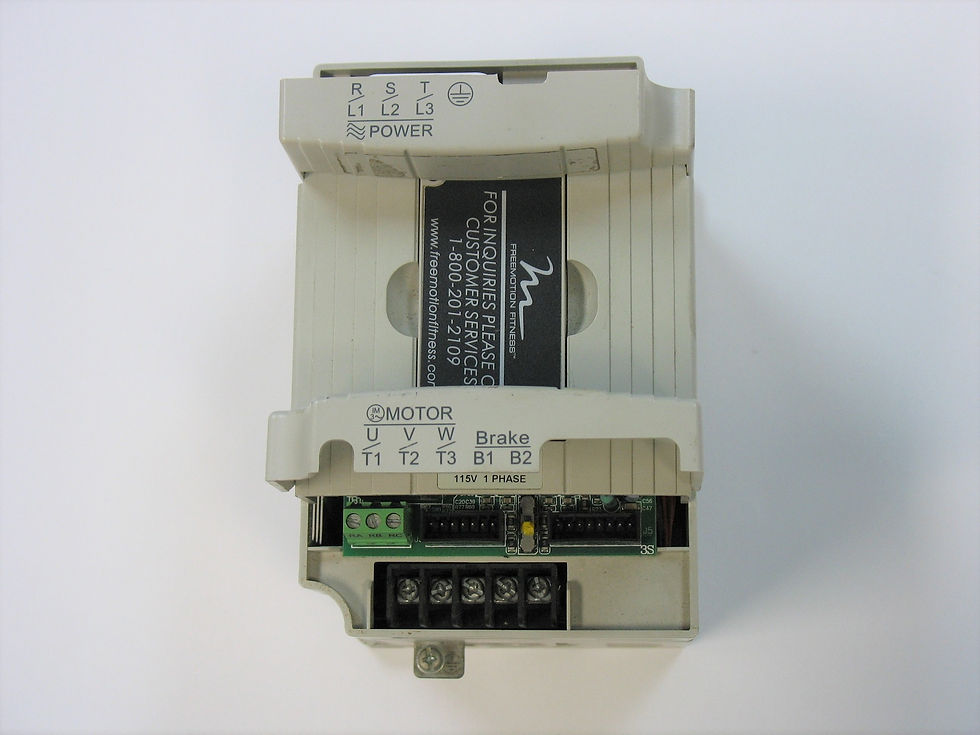Why Does a Motor Use So Much Current at Start-Up?
- David Peterson

- Nov 3, 2020
- 3 min read
Nearly every experienced industrial electrician has started up a motor at some point.
When a motor starts, it consumes a lot of current - especially if it happens to be a large motor.

The current is highest when a motor starts from 0 RPM and when it is activated by the switching of a contactor - an instant in-feed of the voltage driving the current through the coils.
This current at the initial starting of a motor is called "Inrush" current. Many models of clamp-on current meter include a button to record and display that inrush current.
That current can be many times higher than the rated amperage of the motor.
Not only can this cost a LOT of money when it's time to pay the power bill, but it can also lead to supply losses and surges for other equipment in the facility and in the community surrounding it.
Ever had the lights go dim for a moment when a big air compressor suddenly kicks on? That's the result of the inrush current.
The solution to the problem is pretty simple, and usually not very expensive.
Soft-starters and Variable Frequency Drives (VFDs) can control the start-up sequence and allow the motors to ramp on over the course of a few seconds or more. The current consumed then reduces dramatically.

But WHY does this Happen?
Certainly, fixing a problem is the most important step. Just fix it, install the right device, and move on.
But once that step is completed, we can move on to a further question. Why is there so much current used when a motor starts up?
First of all, it's not what you might expect from a mathematical standpoint.
When voltage is applied to a coil (like in a motor) the normal graph for voltage and current over time shows that the current (red below) is the LOWEST when voltage is first applied to a coil.
If we use this textbook definition, we would expect the current to be at its lowest when we start up, not the highest!

But we need to back up a step. This graph is for DC, not AC.
In our typical AC motor, the voltage applied alternates directions quickly, causing a more or less constant resistance to be seen from the coil.
The voltage might be somewhere in the 208-240 range, or higher in the 480 range, depending on the AC motor (single-phase 120 is also possible).
When we place that 240 volts, for example, across a coil, we must understand what voltage really means:

In a voltage supply or source, the energy is potential - perhaps chemical potential in a battery, or mechanical motion of a generator. Regardless, when we supply voltage to the motor, there is a certain energy potential for each unit of charge moving through the coil.
In the motor, that potential energy is converted into a magnetic field, which then drives the mechanical motion of the rotor itself.
Starting the motor from 0 RPM requires overcoming the inertia of a heavy system, as well as overcoming the frictional forces which try to keep the system from moving at all.
Because of all of those opposing forces, the energy required to start the motor is much higher.
As the motor gains speed, smaller changes in speed will require extra energy, but still not as much as when the motor was first starting.
Even maintaining a constant speed certainly requires an input of energy.
Go back to that formula and increase the number on the top of the fraction, since that is the required energy input from one end of the coil to the other. At initial startup, the energy is a larger number.
The input voltage, however, is still only 240 volts.
Since the number on the top of the fraction has increased, the number on the bottom must increase likewise because of that constant voltage value.
The number on the bottom of the fraction relates to the amount of charge difference across the coil, and if the circuit is completed, this charge will be in motion as current.
So we can see that if the required energy increases, the current will also increase.
The only exception would be if the source voltage changes. In reality, it does change a little bit, but not NEARLY to the extent that the current will rise to input the required energy.
Again, you can use that clamp-on current meter to display the inrush current, and you might be surprised at how high the value rises.
The soft-start and the VFD will both decrease the rate of acceleration of the motor, which limits the required energy. When the top of the fraction decreases, so does the bottom (the current).
DO NOT EVER EVER EVER measure motor inrush current with a standard hand-held amp meter. Even the large fuse is limited to only 10 amps. I have seen many motors with a FLA (full load amp) rating of only 1-2 amps reaching above 10 amps at startup. This will blow the fuse in the meter.







Comments